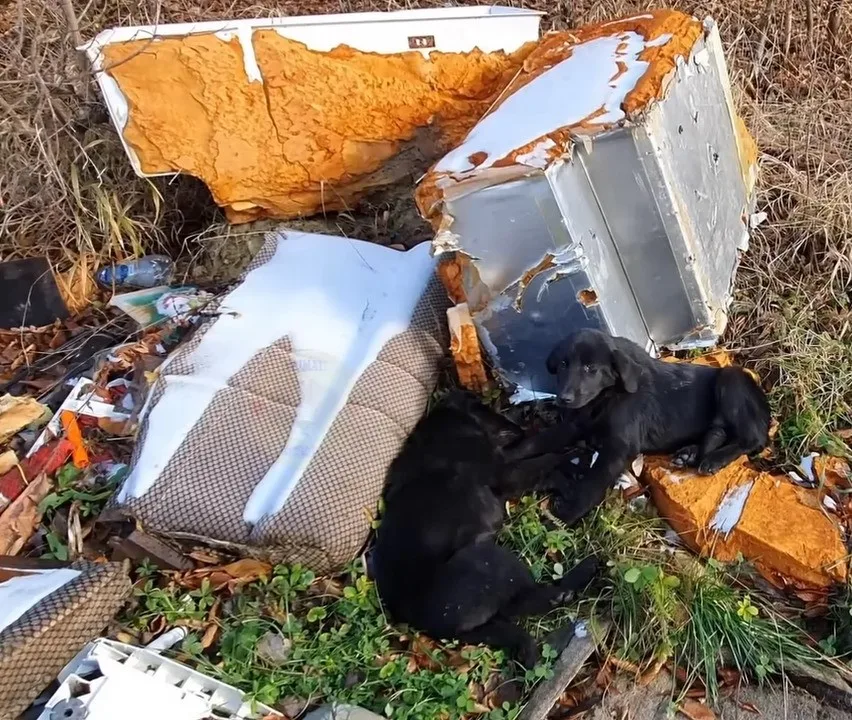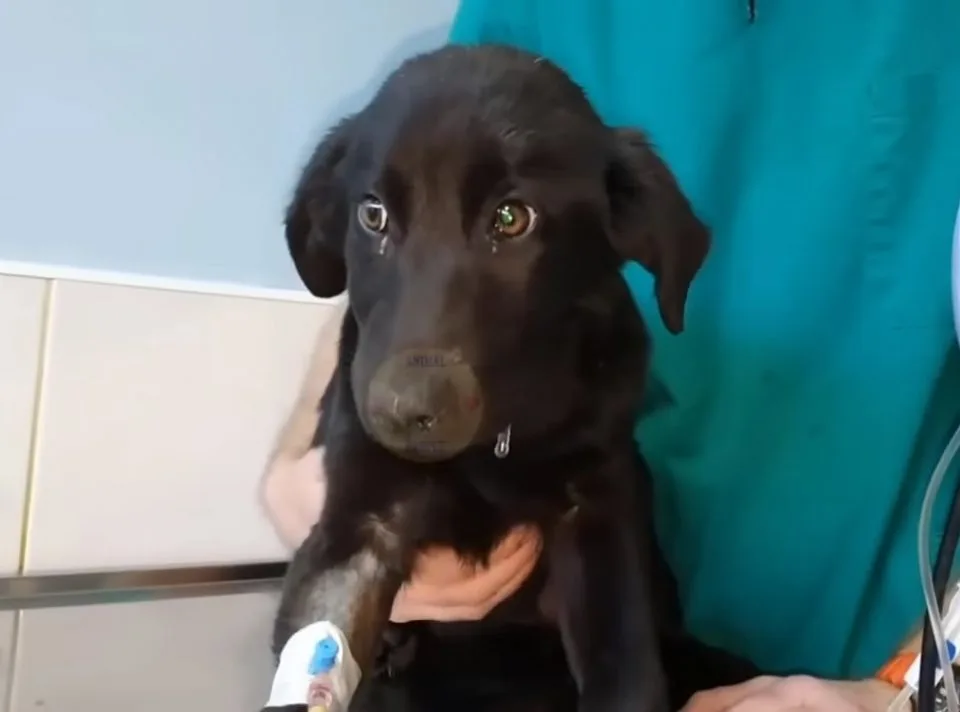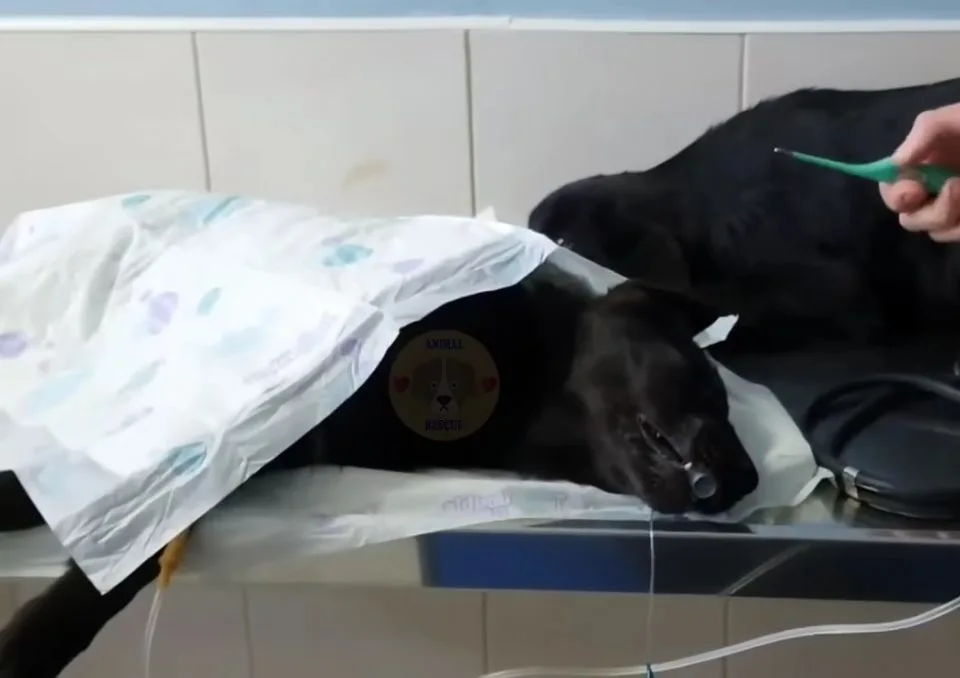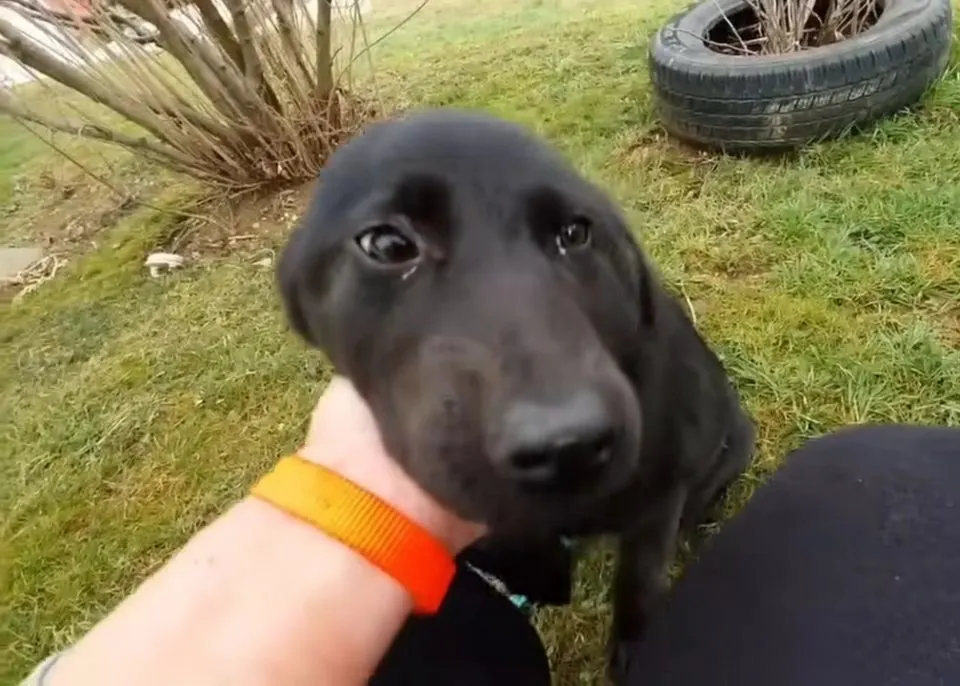One thing that is truly heartbreaking for any animal rescuer is when they try to save a dog, but find out that it was too late.
It can break anyone’s heart to pieces in seconds, as they just wish they could have been there sooner, hoping it might have mattered somehow.
And, who knows, really? Maybe it would have or it would not have. In the end, these tragic events should not happen in the first place. More needs to be done to prevent this.
In this story, we will talk about two struggling puppies who were abandoned on a mountain in the middle of nowhere next to a garbage dump.
Puppies Living In Garbage

Just as soon as rescuers received a call about two abandoned puppies living in the mountains, they hurried to help.
When they got there, they found the puppies right next to a large garbage dump. It was just a heartbreaking sight.
I just can’t even imagine who could be so heartless as to just leave them there where they have no chance of surviving.
Upon seeing the dogs, the rescuers realized that they were barely responsive. They didn’t even care that somebody had come to help them.

They grabbed them and took them back to the car where they turned the heater on to help them regain their body temperature, as the place they were staying in was freezing.
After taking them to the vet, they checked on one of the puppies who was completely unresponsive, and they breathed a sigh of relief when they realized that she was still breathing.
The other puppy was visibly shaken and depressed, as he was just looking at the vets with a very sad look.
A Really Difficult Recovery

After a while, the vets realized that one of the dogs could not be saved, and they had to let her go so she would not suffer anymore.
Her lungs were full of blood, likely from being hit by someone. It was just the most heartbreaking thing having to do that to them, but there were no other options.
They were not going to let the same happen to the other dog, now named Lily. Upon doing a checkup, they realized that she was suffering from parvovirus.
This had to be treated delicately, so they made sure to watch her every step of the way to see that she recovers.
During her treatment, she didn’t want to eat at all, as it was still causing her digestion problems.

They kept her on IV through the whole recovery process to make sure she had all the necessary nutrients.
After about 7 days of treatment, she had an appetite. Lily ate quite a lot of food and her digestion was also not a problem anymore.
After a little over a month, Lily was almost a completely changed dog. Her tail started wagging all the time, she likes to play more and more, and she is eating like a big dog.
The veterinarians will vaccinate her soon, but after her complete recovery, she will be ready for adoption.
I truly hope that Lily finds someone who will give her the same level of love and care as her rescuers. She deserves it.
If you’ve noticed your furry friend leaving a trail of drool wherever they go, you might be wondering why your dog is drooling so much. As a seasoned dog enthusiast, you’re familiar with the various reasons behind this common canine behavior. From excitement to potential health issues, excessive drooling can signal a range of underlying factors that merit attention.
Your bond with your pup is undeniable, and understanding the reasons behind their excessive drooling can help you ensure they’re happy and healthy. So, grab a treat, settle in, and let’s explore the intriguing world of dog drool together.
Understanding Canine Drooling
Normal vs. Excessive Drooling
When it comes to your furry companion’s drooling, it’s essential to differentiate between what’s considered normal and what could be a cause for concern. Normal drooling in dogs typically happens when they anticipate food, experience heat, or become anxious. It’s a natural response for many breeds and varies based on their anatomy and behavior.
On the other hand, excessive drooling can be an indicator of an underlying issue that needs attention. If you notice a sudden increase in drooling that seems out of the ordinary for your dog, it might be wise to seek advice from a veterinarian. Changes in drooling patterns could signify potential health problems that require prompt investigation.
Signs That Indicate a Problem
Understanding the signs that go beyond regular drooling can help you identify if there’s a problem that needs addressing. Look out for persistent drooling, especially if it’s accompanied by other symptoms like bad breath, pawing at the mouth, or difficulty eating. These signs can point towards dental problems, oral infections, or even more severe conditions that necessitate professional evaluation.
Monitoring your dog’s drooling habits and being vigilant about any sudden or unusual changes can aid in early detection of potential health issues. Prioritizing your pet’s well-being by recognizing and responding to abnormal drooling patterns ensures they receive the care they need promptly.
Common Causes of Excessive Drooling
Dental Issues in Dogs
If your dog is drooling excessively, one common cause could be dental problems. Issues like gum disease, tooth infections, or oral tumors can lead to increased saliva production in dogs. Regular dental check-ups and proper oral hygiene are crucial to prevent these issues.
Heatstroke and Dehydration
During hot weather, dogs can experience excessive drooling as a response to regulate their body temperature. Heatstroke and dehydration are serious conditions that can manifest through increased drooling. Ensure your furry friend has access to shade, water, and never leave them in a hot environment.
Nausea and Gastrointestinal Problems
Nausea and gastrointestinal problems can also be reasons for your dog’s excessive drooling. Conditions like ingestion of toxic substances, stomach ulcers, or inflammatory bowel disease can trigger drooling. If you notice persistent drooling along with other symptoms, consult your vet promptly.
Mouth and Throat Obstructions
Foreign objects stuck in your dog’s mouth or throat can cause excessive drooling. Items such as bones, toys, or even tumors can obstruct the normal saliva flow, leading to increased drooling. It’s essential to monitor your dog’s behavior and seek veterinary assistance if you suspect an obstruction.
Anxiety and Stress-Related Drooling
Just like humans, dogs can also drool more when anxious or stressed. Changes in the environment, separation anxiety, or fear-inducing situations can trigger excessive drooling in dogs. Providing a safe and comfortable space for your pet and addressing any underlying anxiety issues can help reduce stress-related drooling.
When to Consult a Veterinarian
Identifying Emergency Situations
If you notice your dog excessively drooling and displaying additional concerning symptoms such as bloating, pale gums, or difficulty breathing, it’s crucial to seek immediate veterinary assistance. These signs could indicate a severe medical emergency that requires prompt attention to ensure your dog’s well-being. Consulting a veterinarian promptly in such situations can help diagnose and address any underlying health issues effectively.
What to Expect During the Examination
When you take your drooling dog to the veterinarian, they’ll conduct a thorough examination to determine the cause of the excessive drooling. The vet may ask about your dog’s medical history, perform a physical examination, and possibly recommend additional diagnostic tests such as blood work or imaging studies. Based on the findings, the veterinarian will provide you with a treatment plan tailored to your dog’s specific condition. It’s essential to follow their guidance closely to help your furry friend get back to their normal health.
Managing and Preventing Excessive Drooling
Home Care Tips for Drooling Dogs
If you notice your dog drooling more than usual, there are a few things you can do at home to help manage the situation. Firstly, check for any stuck objects in their mouth that may be causing the excessive drooling. Ensure your dog has access to fresh water at all times to prevent dehydration, which could be a reason for the increased drooling. You can also gently wipe your dog’s mouth and chin to keep them clean and comfortable. Consider adjusting their diet to see if certain foods may be triggering the excessive drooling, and consult your vet for suitable dietary recommendations.
Long-Term Solutions and Treatments
For long-term solutions, it’s essential to address any underlying health issues contributing to your dog’s excessive drooling. Regular dental check-ups are crucial to prevent dental problems that could lead to drooling. Keep your dog cool during hot weather to avoid heatstroke, which can also cause excessive drooling. If anxiety is a trigger, work on reducing stressors in your dog’s environment, consider behavioral training, or consult with a professional dog trainer. In some cases, medications may be prescribed by your vet to manage certain health conditions causing the drooling. Always consult with your vet for a tailored treatment plan to address the specific needs of your drooling dog.
Conclusion
You’ve learned about the various reasons behind your dog’s excessive drooling, from dental issues to anxiety. By understanding the potential causes and signs, you can take proactive steps to manage your furry friend’s drooling. Simple actions like checking for obstructions and ensuring they stay hydrated can make a big difference. Remember, long-term solutions involve addressing underlying health concerns with the help of your vet. By staying vigilant and providing the necessary care, you can ensure a happy and healthy life for your beloved pet. Keep an eye out for any changes in drooling behavior and always prioritize your dog’s well-being.
Frequently Asked Questions
Why is my dog drooling excessively?
Excessive drooling in dogs can be caused by dental issues, heatstroke, dehydration, nausea, obstructions in the mouth, or anxiety.
How can I manage my dog’s excessive drooling at home?
You can manage excessive drooling in dogs by checking for mouth obstructions, ensuring they are hydrated, and adjusting their diet.
What are some long-term solutions for excessive drooling in dogs?
Long-term solutions for excessive drooling in dogs involve addressing underlying health issues through dental care, heatstroke prevention, anxiety management, and potential medication prescribed by a veterinarian.
Why is regular monitoring and proactive care important for my dog’s drooling?
Regular monitoring and proactive care are important for maintaining a healthy bond with your dog and ensuring their overall well-being.
[no_toc]

Hey there, I’m Janet Brooks, a dog-loving student from California. I’m all about helping pups in need, especially those without homes. Me and my awesome friends work together to give shelter and love to stray dogs. Oh, and I also write blogs about dogs to share helpful info.